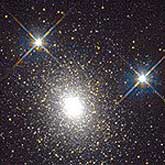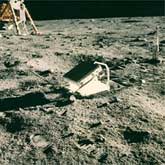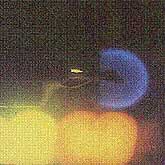More Astronomy Facts
Comets and Asteroids:
- Catch A Shooting Star
- Large Asteroid Zooms Safely Past Earth
- Look, Up in the Sky. It's A Bird. No It's A Meteorite!
- NASA Spacecraft Reveals Surprising Anatomy Of A Comet
- Stars With Long Hair
- The Minor Planets
- Uncharted Meteors
- X-ray Emissions From Comets
Cosmology:
- A Map of the Sky
- Binary and Multiple Star Systems
- Dark Energy Changes the Universe
- Dark Matter Mystery
- From Here To There
- Hats Off to the Sombrero
- Introduction to Constellations
- Introduction to Constellations
- Live Fast, Blow Hard, and Die Young
- Near-Earth Supernovas
- Neutron Stars
- Reading The Colors of the Spectrum
- The Big Bang Model
- The Chandra Mission
- The First Starlight
- The Oldest Light in the Universe
- The Wilkinson Microwave Anisotropy Probe (WMAP)
- What is Dark Energy?
- What Powered the Big Bang?
Deep Space:
- A Ring Around a Dying Star
- Ancient Planet
- Ancient Planet in a Globular Cluster Core
- Astronomers Glimpse Feeding Of A Galactic Dragon
- Black Hole Sound Waves
- Cosmos Provides Astronomers with Planet-Hunting Tool
- Crab Nebula
- Galaxy Cluster RDCS 1252.9-2927
- Groups & Clusters of Galaxies
- Hubble & Keck Teams Find Farthest Known Galaxy in Universe
- It's a Supernova
- Light Fantastic
- Magnitude of an Astronomical Object
- N81
- New Evidence Points to a Gamma-Ray Burst... In Our Own Backyard
- Nursery of Giants Captured in New Spitzer Image
- Powerful Quasars
- Starburst, No, Not The Candy
- The Antennae
- White Dwarfs
Exploration:
- Astronaut Photography
- Backyard Telescopes for New Planets. Is it Possible?
- Exercising In Space
- GP-B: More Than Just a Pretty Face
- Laser Guide Stars
- Microbes In Space
- Mission: Gather Comet Dust; Return To Earth
- Mixed Up In Space
- Sputnik and The Dawn of the Space Age
- Stopping In Thin Air
- The Brave and Cold Ulysses
- The Devil's In The Details
- Voyager Phone Home
- Wernher Von Braun
- What Is Microgravity?
- X-ray Telescopes
Observations:
- Amazing GRACE
- An Old Science Experiment On The Moon
- How Far Are The Seven Sisters?
- Jumping Starlight
- Right Ascension & Declination
- Rossi X-ray Timing Explorer Solves Mystery of Pulsar 'Speed Limit'
- The Constellations
- What Is Polarimetry?
Solar:
- Does The Sun Go A Bit Wobbly?
- Is There Weather In Space?
- Keeping Your Balance for Good Science
- Solar Spitwads
- The Color of The Sunset
- The Sun’s Corona
Solar System:
- 318 Times as Massive as Earth
- A Giant X-Ray Machine
- A Satellite Of Our Own
- Big Fish
- Blast Wave Blows Through the Solar System
- Exploring The 'Red Planet'
- Introduction To Jupiter
- It's Dusty Out There
- It's Gonna Hit Us... Or Is It?
- Jupiter's Great Red Spot - A Super Storm
- Lunar Explorations
- Mercury
- Mount Olympus
- Neptune: The Basics
- Not Quite A Planet
- Pluto Is Way Out There
- Pluto: Beyond Neptune Or Not?
- Saturn: The Basics
- Sibling Rivalry: A Mars/Earth Comparison
- The Kuiper Belt
- The Real Lord of the Rings
- The Strange Spin of Uranus
- The Strange Spires of Callisto
- The Sun, The Mighty Engine Of Our Solar System
- Two Face? Absolutely!
- Venus Is Hot Stuff
- What Happens at the Edge of a Black Hole?
- Will the Sun Shine Forever?






